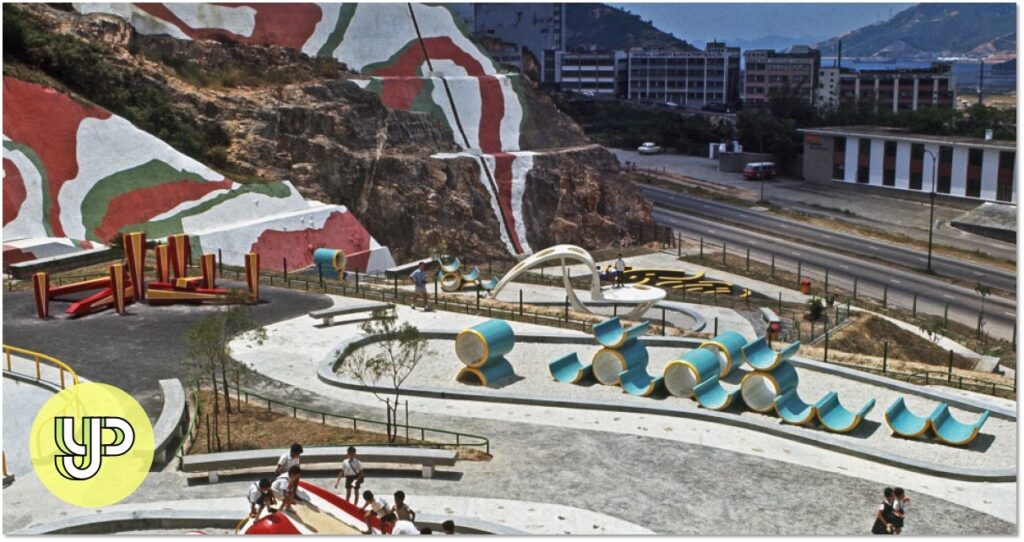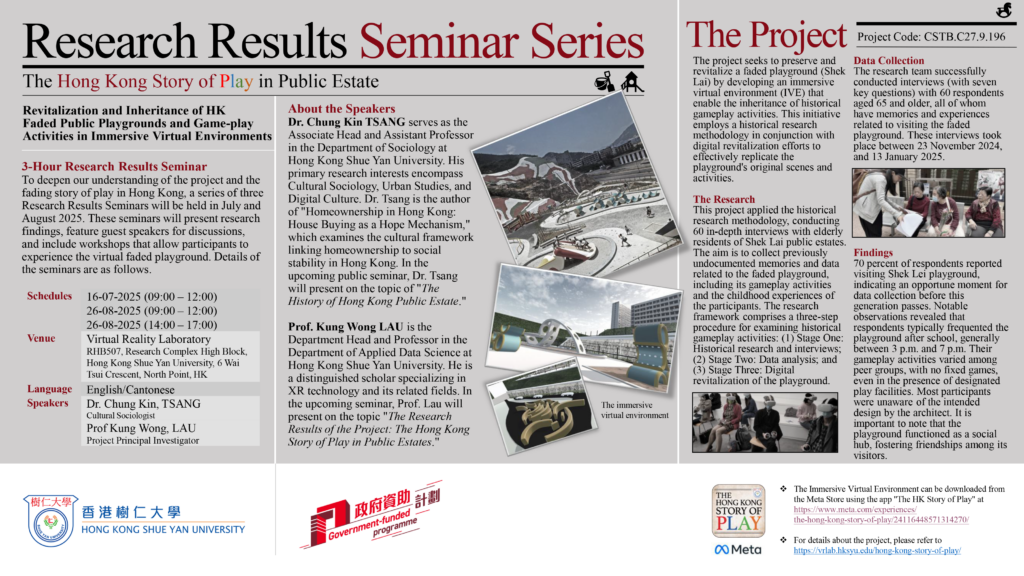
Hong Kong Story of Play
Hong Kong Story of Play
Supported by Lord Wilson Heritage Trust

Research Results
The Hong Kong Story of Play in Public Estate
Revitalization and Inheritance of Hong Kong Faded Public Playgrounds and Game-play Activities in Immersive Virtual Environments
Project Code: CSTB.C27.9.196
The Project Team
Principal Investigator (PI): Prof. Kung Wong LAU
Research Assistant (RA): Ms. Yuki NAM
Research Assistant (RA): Ms. Laetitia WONG
Host: Department of Applied Data Science, The Hong Kong Shue Yan University
Acknowledgements: We extend our sincere gratitude for the technical support provided by the Virtual Reality and Game Development Laboratories. Special thanks are due to colleagues Mr. Benz Sze, Mr. Yves Liu, and Ms. Renee Yeung for their invaluable contributions to the success of this project.
Background of the Research
The Research
This research employs a historical research approach in conjunction with in-depth interview inquiry to recapture the overlooked aspects of our Hong Kong narrative related to faded playgrounds in public estates, historical gameplay activities, play culture, and their associated meanings as derived from the childhood experiences of local elderly individuals. The documentation of these faded playgrounds and gameplay activities was facilitated through a series of in-depth interviews conducted within local public estates, engaging the participation of elderly residents. Simultaneously, desk research will be undertaken, involving the examination of pertinent historical documents, such as monographs, local historical archives, and museum artifacts, to complement and cross-reference the data obtained from the interviews. This research gathered data through a series of in-depth interviews with 60 randomly selected respondents from local public estates.
This digital historical project is specifically designed to establish and elucidate historical gameplay activities and historical playgrounds as a distinct field of study within immersive virtual environments. To achieve these objectives, a three-step procedure has been developed, as illustrated in the figure. This three-stage framework serves as the conceptual foundation for the project.
- Stage ONE: Historical research and interviews of elderly living in the selected public estates
- Stage TWO: Data analysis of historical public playgrounds and those game-play activities
- Stage THREE: Realization of inheritable game activities in a designed virtual playgrounds in IVEs
Results and Findings
The 60 interviews with the elderly age (Respondents) over 65 years-old were conducted regarding the faded playgrounds between 23rd November, 2024, and 13rd January, 2025. Seven key questions have been asked during the interviews, they are (1) Have you heard of the Shek Lei playground? (2) Have you played at the park? (3) Have you lived in this area for a long time? (4) When do you usually go to play? (5) How do you play? (6) What is your most memorable experience? (7) Can you describe the faded playground in your memories?
It is noteworthyvv that among the 60 interviews conducted, 70% (42 respondents) reported having visited and engaged in activities at the Shek Lei playground in Kwai Chung (This iconic playground was demolished sometime in the 1990s). This finding provides valuable historical information for the revitalization of the playground and its associated gameplay activities. In response to question 4 regarding the timing of their visits to the faded playground in the past, respondents indicated that most of them frequented the playground during the period after school, typically between 15:00 and 16:00, and before dinner, around 18:00 to 19:00. They noted that this timeframe was ideal for gathering children in the vicinity for gameplay activities.
The most significant question addressed how respondents engaged in play within the faded playground and the nature of their gameplay activities. Participants expressed fondness for their childhood memories, noting that there were no specific daily activities; rather, gameplay varied based on the composition of their peer groups. Common activities included tag games, climbing, jumping, and running throughout the playground. A noteworthy finding is that almost all respondents did not adhere to the architect’s intended design for the playground. Many were unaware of the specific purposes of the facilities present. However, the colorful and surreal features stimulated their creativity, leading to the development of innovative gameplay activities.
When the research team inquired about the most memorable experiences in the faded playground (Question 6), the majority of respondents reflected positively on their time there. They noted that the playground served as a social hub where friendships were formed, although disagreements and occasional conflicts did occur. Ultimately, these interactions contributed to a memorable childhood experience, as nearly all children from the surrounding area gathered there simultaneously.
After gathering comprehensive information and emotional expressions from the respondents, as well as data from other research and official documentation regarding the layout and setting of the faded playground, the research team is able to simulate and revitalize this historical site in a designed IVEs. The research team opted not to specify particular activities within the simulation; instead, aimed to present the virtual-physical appearance of the faded playground to new generations
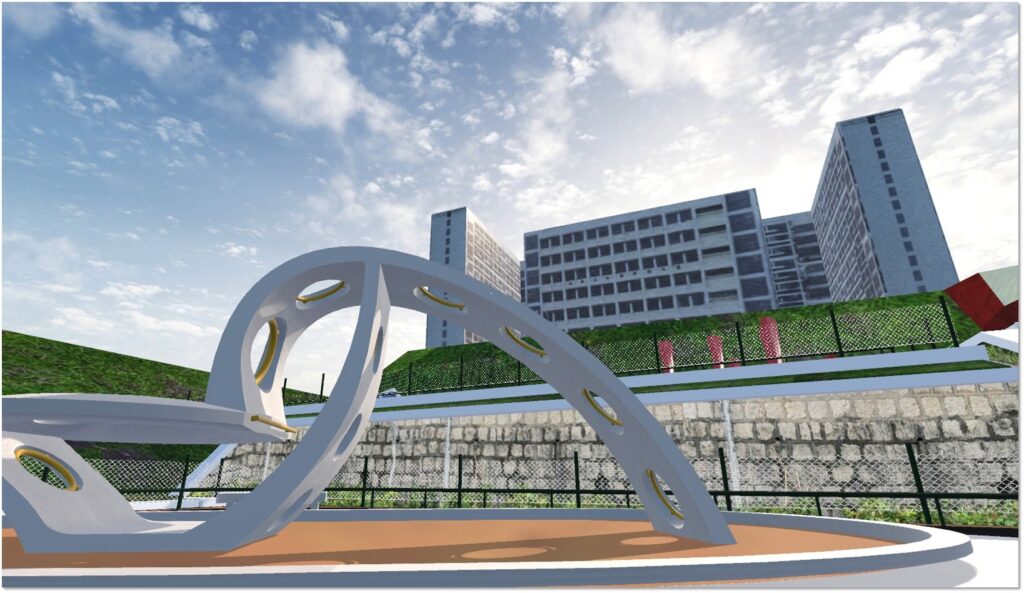
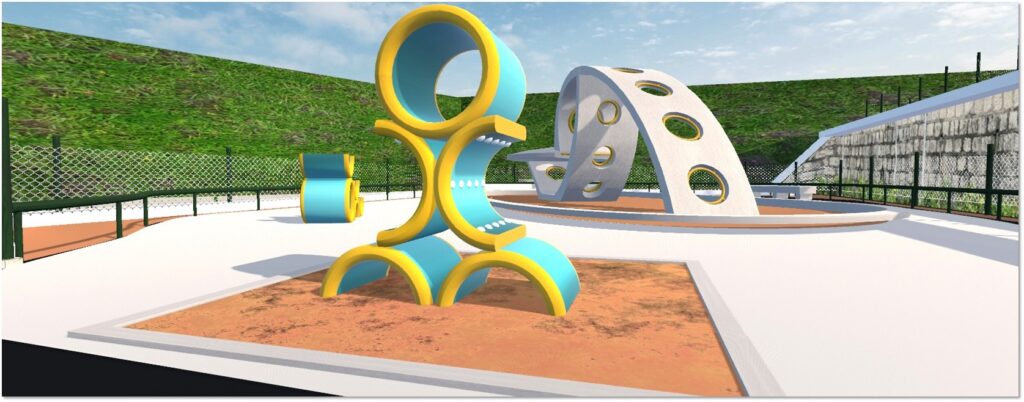
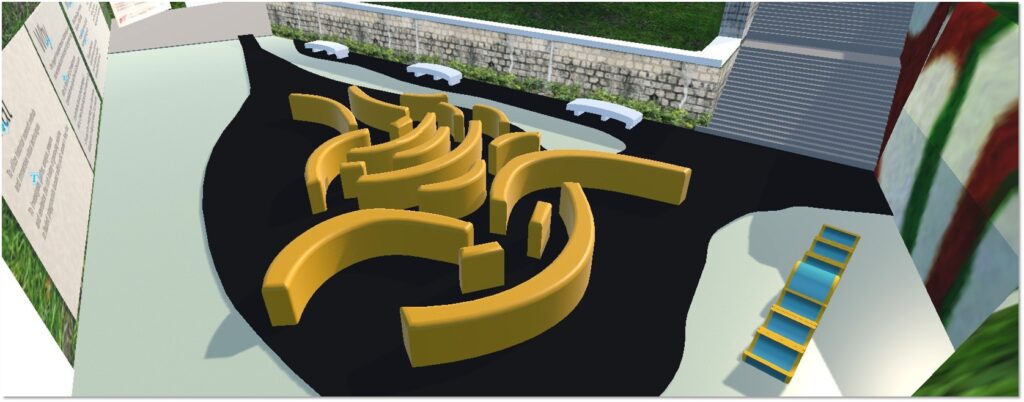
The Virtual Shek Lei Playground
Conculsion and Implications
This research successfully identified and interviewed respondents who provided valuable insights, enabling the research team to gather essential information for both the development of IVEs and the revitalization of missing data primarily sourced from photographs and official archives. Through this historical inquiry, the research team was able not only to simulate and recreate the faded playground but also to gain a deeper understanding of its historical usage for gameplay activities. The proposed use of IVEs offers a novel approach to preserving and revitalizing these fading memories, enabling dynamic interactions with the past that traditional methods cannot facilitate. This framework serves as evidence for future studies and projects related to cultural heritage preservation.
The implications of this approach are twofold. First, it advocates for the incorporation of historical research prior to the design and implementation of simulated IVEs, engaging academics, cultural institutions, and community members in the process. Such collaboration can foster a sense of ownership and pride in the revitalization of historical scenes and activities, thereby promoting their relevance in contemporary society. Second, the application of IVEs can significantly enhance accessibility, allowing a wider audience to engage with Hong Kong’s rich history, irrespective of geographical constraints.
The Public Research Results Seminar Series
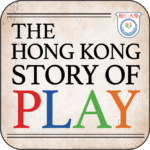
The Immersive Virtual Environment can be downloaded from the Meta Store using the app “The HK Story of Play” at


